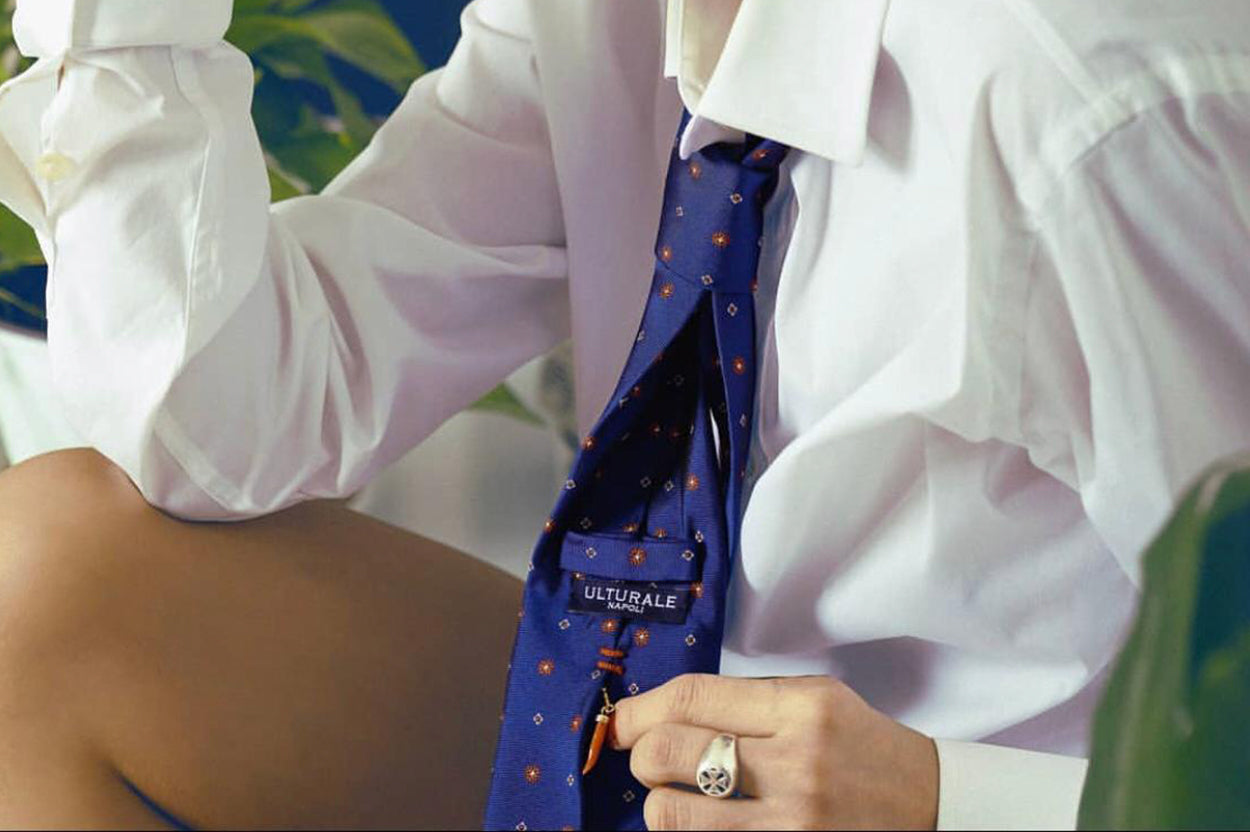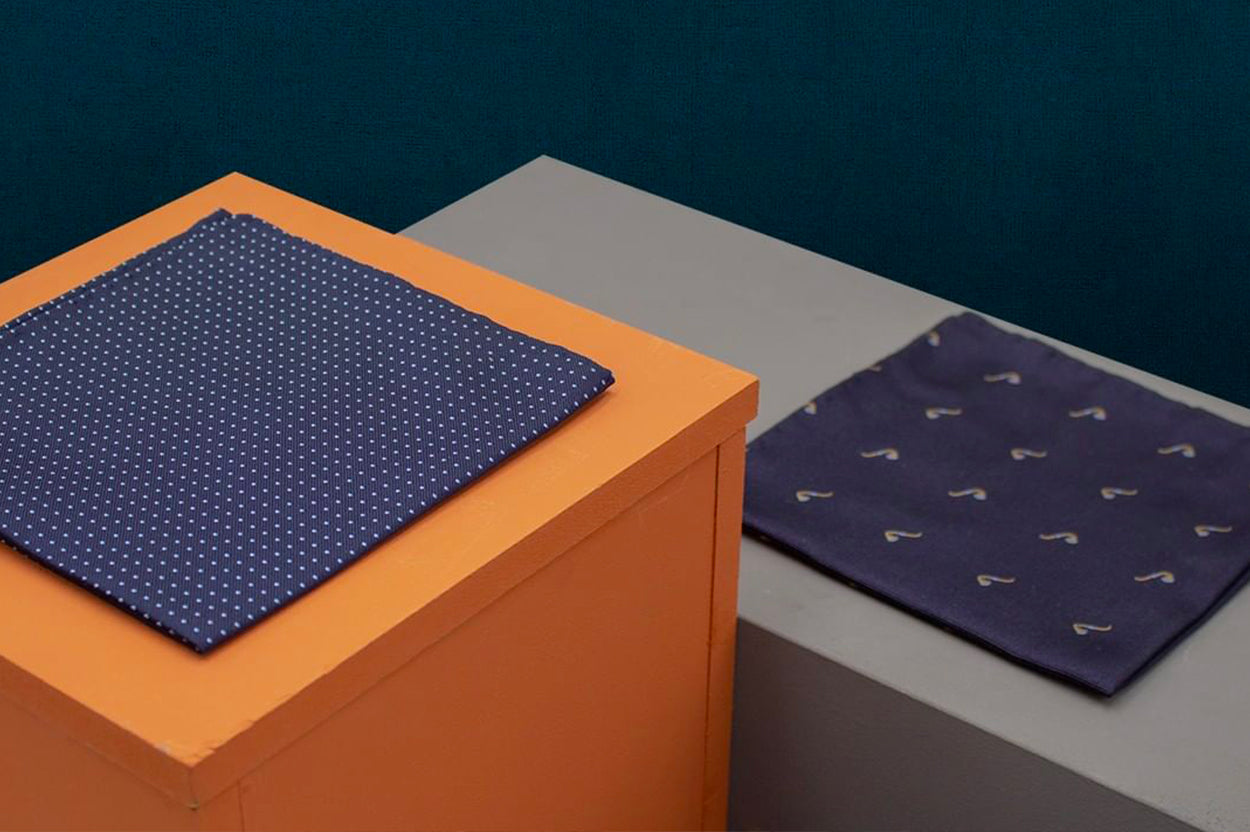
Le mille vite della sciarpa
Dietro un indumento possono nascondersi infinite suggestioni. Scopriamole insieme, curiosando fra storia e cultura
Solo una striscia di stoffa? Può darsi, ma quante storie ci racconta! Oggi, quando parliamo della sciarpa, pensiamo soprattutto a un indumento per proteggerci dal freddo e insieme a un accessorio in grado di conferire personalità al nostro outfit anche quando il soprabito nasconde la cravatta. Ma se solleviamo un po’ lo sguardo dalla nostra esperienza quotidiana, ci rendiamo conto che la sciarpa è un indumento molto più versatile e pieno di sorprese di quanto si pensi comunemente.
Le origini: sudario o “paniere”?
Iniziamo dalle origini, e ci imbattiamo subito in una prima scoperta inaspettata. È opinione comune che la sciarpa nasca nell’Antica Roma. Ma il suo nome, sudarium, ci fa capire chiaramente che allora il suo scopo non era difendere dal freddo, ma al contrario dal caldo, venendo utilizzata per detergersi il sudore. La parola sciarpa, invece, viene dal francese écharpe, che a sua volta deriva da un termine francone di derivazione latina che alla lettera voleva dire paniere di giunco. Probabilmente il motivo di questo strano accostamento va ricercato nella trama intrecciata del tessuto, che può appunto ricordare quella di un paniere.
Restando nell’antichità, una magnifica testimonianza della diffusione della sciarpa anche in Estremo Oriente si ha guardando il celebre Esercito di Terracotta cinese, costituito da migliaia di statue raffiguranti soldati: un’armata simbolica destinata a proteggere nell’Aldilà il primo imperatore cinese. I soldati indossano appunto sciarpe, che descrivono il grado dei soldati.

Segno di appartenenza
Il caso dell’Esercito di Terracotta ci fa capire quanto antico e stretto sia il legame fra la sciarpa e la vita militare o, in senso più ampio, come le sciarpe siano da sempre – fra le altre cose – un modo per sottolineare l’appartenenza a un determinato gruppo o il ruolo istituzionale ricoperto da chi le indossa.
Una prima suggestione in questo senso è il nesso fra la sciarpa e l’affascinante figura dell’aviatore. Un nesso che unisce realtà e fantasia. Antoine de Saint-Exupéry, l’autore di Il piccolo principe, era un famoso aviatore. E il protagonista, all’inizio del racconto, incontra proprio un pilota di aerei, perso nel Deserto del Sahara. Ma è lo stesso piccolo principe a indossare una lunga sciarpa dorata. L’accostamento fra sciarpa e aviazione è d’obbligo anche quando pensiamo al mitico Barone Rosso, non tanto inteso come la figura storica di Manfred von Richtofen, asso volante tedesco della Prima guerra mondiale, quanto per il suo “alter ego” Snoopy, il cane delle celebri Peanuts di Charles Schulz. In alcune strisce, il serafico bracchetto si cala nelle parti del Barone Rosso, indossando occhialoni e, appunto, una sciarpa che – potenza della suggestione – resta perfettamente orizzontale, come se fosse al vento, anche se Snoopy non si trova su un aereo in volo ma solo sul tetto della sua cuccia.
Tornando con i piedi per terra, la sciarpa azzurra, portata ad armacollo (cioè su una spalla e poi in diagonale lungo il busto) o intorno alla vita, è un ornamento che gli ufficiali delle Forze Armate e della Polizia italiane indossano in determinate circostanze. Fanno lo stesso anche i presidenti delle province e i sindaci delle città metropolitane durante le cerimonie ufficiali (gli altri sindaci indossano invece la fascia tricolore).
Un’analoga funzione di orgogliosa appartenenza a un gruppo viene svolta dalle sciarpe anche nel tifo calcistico. I supporters vanno allo stadio indossando sciarpe con i colori del loro club e spesso con il nome di uno specifico gruppo di tifosi. Spesso in curva mostrano tutti insieme il loro vessillo, dando vita a coreografiche “sciarpate”.

Vezzo d’artista
Ma la sciarpa si associa anche a un’idea di estro, di talento, e per questo ha sempre avuto un rapporto privilegiato con l’arte. La sciarpa rossa è, per esempio, parte integrante della classica iconografia di Federico Fellini. Ma anche il pittore Antonio Ligabue si è ritratto diverse volte con il medesimo indumento dello stesso colore.
Giuseppe Verdi ha una sciarpa bianca annodata al collo in uno dei suoi ritratti più celebri, tracciato a pastello da Giovanni Boldini nel 1886 e oggi custodito nella Galleria nazionale d’arte moderna a Roma.
I cantanti, poi, spesso proteggono le preziose corde vocali con drappi di varia foggia, trasformando a volte questa norma di prudenza in un vezzo estetico. Abbiamo visto Luciano Pavarotti avvolto tanto in sobrie sciarpe bianche quanto in ampi foulard variopinti, dalle fantasie quasi femminili. Quanto a originalità di forme e tinte, grande ispirazione arriva dalla musica leggera. Roger Daltrey, vocalist dei The Who (una delle band di riferimento della subcultura Mod), ha spesso indossato sciarpe di seta o fazzoletti. Jimi Hendrix aveva quasi sempre qualcosa di eccentrico attorno al collo, a completamento dei suoi look multicolori, e qualcosa di simile avrebbe fatto anche Prince diversi anni dopo.
Oggi, la sciarpa resta un articolo molto indossato e soprattutto molto regalato. Oltre alla bellezza e alla varietà di tessuti, colori e fantasie, comunica una sensazione di calore, anche metaforico. La sciarpa è un abbraccio, attraverso il quale trasmettiamo affetto e senso di protezione.


